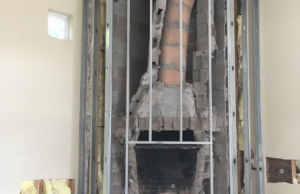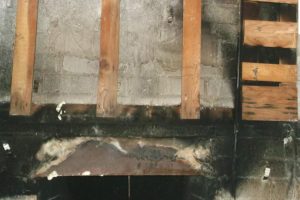Chimney & Fireplace Cleaning Kit Rentals
If your property has a chimney, it’s completely natural to have questions about cleaning it. On this page, you’ll find answers to the most common questions about chimney cleaning, and by the end, you’ll see that the process has been largely demystified.
How Often Should You Clean Your Chimney?
Additionally, the CSIA’s take on open masonry fireplaces is that once they develop an eighth of an inch of sooty buildup, they need to be swept. The presence of glaze calls for sweeping sooner. Meanwhile, “factory-built fireplaces” require sweeping once “any appreciable buildup occurs” because they are quite vulnerable to acidic deposits. All this depends on how much you burn, what you burn, and the type of system you have.
| Equipment | Price | Details |
| Equipment Rental, including visual inspection | $150 (2 days) | Each additional day $40 |
| Filler (per cleaning) | $25 | Required to use this equipment |
| Shipping | $75 | Minimum amount |
| Written report | $50 | Available after inspection |
| Deposit | $400 | Refunded after return of equipment |
FAQ’S:
Customers ask all the time how often should the fireplace be cleaned.
It all depends on three things.
How Do You Tell if Your Fireplace Needs to Be Cleaned?
What Type of Wood Should I Burn?
Do Chimney Sweeping Logs Work?
How Long Does it Take to Clean a Fireplace?
How Do You Know If Your Chimney Needs to Be Cleaned?
There are many signs that a cleaning is needed, as highlighted by Family Education. Keep an eye out for signals such as these:
- The odor of burned wood emanating from the fireplace when it is not burning anything.
- Overly smokey fires.
- Poorly burning fires.
- A damper “caked with creosote,” which will become black.
Can I Clean My Chimney Myself?
When it comes to the actual cleaning process, Family Education recommends hiring a professional for top-of-the-line results. A pro will take less time, deliver better results, and get dirty so you don’t have to. With that said, it is possible to adequately clean on your own. If you’re the DIY type, the only items you need are:
- A ladder for roof access.
- A broom for cleaning up debris and ash.
- A flashlight to examine what you’ve done.
- Additional sheets or cloths to cover nearby furniture and rugs.
- A vacuum cleaner and a crevice attachment.
- A chimney rod and brushes,
- plus a long-handled, stiff-bristled cleaning brush (for the damper).
- An old sheet or drop cloth and duct tape to attach it to the opening of the fireplace.
- For your attire, you’ll need protective gear, including a dust mask and eye protection as well as gloves. Another recommendation is to wear clothes that you won’t mind getting dirty.
The best alternative is to order the cleaning kit from the Chimney Draft Doctor, which includes everything you need. If you’d like additional instructions, check out this handy guide from Bob Vila.
How Do You Start Your Wood-Burning System?
What Happens if You Don’t Clean Your Fireplace?
Neglecting to clean your fireplace can have dire consequences. The buildup of tar and other debris such as birds’ nests can ultimately result in a fire, according to American Environics. Therefore, to protect both life and property, it’s essential to keep your fireplace and chimney clean.




